If some unfriendly nation decides to hit America with an EMP attack there really won’t be a lot in the way of good news. If there is one bright spot in the whole mess it’s that EMP weapons explode way above the atmosphere, so none of their physical effects reach the ground. We might lose all our electronics and be knocked back to the 19th century in the space of a minute, but at least we won’t have blast, thermal pulse and radioactive fallout to deal with.
Or will we?
An EMP warhead won’t directly expose us to nuclear effects, but it could do it indirectly. One of the most chilling things about EMP is that it can turn our own technology against us, turning things we rely on into deadly threats.
Despite a few well-publicized accidents nuclear power is one of the safest ways of generating electricity ever discovered. The total death toll from nuclear accidents is lower than the number of people who die in coal mine accidents every year (mostly in China). It’s dwarfed by how many died when the Möhne dam was destroyed in 1943. Nuclear reactors are scary – as are most big, complicated things that get very hot – but you really aren’t very likely to be harmed by one.
The problem is, if there’s an EMP attack that could change in a hurry. Right now there are 99 operational nuclear power stations in the USA, producing a fifth of the nation’s electricity. An EMP could trigger a series of catastrophic failures, by taking away the power the reactors need to operate safely.
Selling Ice to the Eskimos?
You’re probably thinking “What?” right now. It does sound bizarre. These stations produce electricity – huge amounts of it – so why would they suddenly run out of power? The answer is slightly complicated, and potentially very frightening.
Because of the damage they can cause if they go wrong, nuclear reactors are built with “fail safe” as one of the basic principles. At any moment, a whole range of systems are actively working to stop the reactor from shutting down. If a major component fails, a bomb goes off in the control room or an EMP detonates a few hundred miles above it, those systems stop working and the reactor rapidly starts to shut down.
The key step is the insertion of the control rods into the reactor core. These rods are made of materials that absorb neutrons, like boron and silver. It’s neutrons that make the chain reaction in a reactor happen; when atoms of plutonium or uranium decay, they release neutrons. Some of these hit other atoms, splitting them – and releasing more neutrons. Reactor fuel isn’t enriched enough for the reaction to reach explosive speeds, so all that happens is a lot of heat is produced and soaked up by the coolant. The coolant then passes it on through heat exchangers, boiling water into steam that spins the generator turbines.
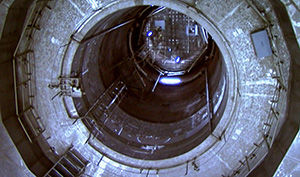 If you can absorb enough of the neutrons, instead of letting them hit other atoms, the chain reaction will stop. That’s what the control rods are for. By moving them in and out of the reactor core the operators can control the speed of the reaction and regulate how much energy is released, or they can shut it down altogether by inserting the rods the whole way.
If you can absorb enough of the neutrons, instead of letting them hit other atoms, the chain reaction will stop. That’s what the control rods are for. By moving them in and out of the reactor core the operators can control the speed of the reaction and regulate how much energy is released, or they can shut it down altogether by inserting the rods the whole way.
Because reactors are designed to fail safe, all the control systems are built to keep the rods out of the core. If the systems fail the rods will simply fall into the fully inserted position, the neutron flux will be cut to below operating levels, and the chain reaction will stop. Within seconds of a major EMP attack, every reactor in the USA will have its rods in place and be shutting down. So, problem solved?
Will Reactors Really Fail Safe?
No, unfortunately not. The problem is that the vast amount of heat produced by splitting atoms doesn’t just go away when the reaction stops. It takes a long time for the reactor to cool down below the coolant’s boiling point. That doesn’t matter as long as the coolant is still circulating through the heat exchangers – but keeping the coolant moving takes power, and the reactor has just shut down.
If the coolant pumps stop, what happens is the coolant in the actual reactor vessel just keeps soaking up the residual heat. It’s under high pressure, to raise its boiling point, but eventually it will boil anyway. When it does, the pressure will blow the cooling system – and probably the whole reactor vessel – apart. With the cooling system gone the remaining fuel will melt down, possibly burning its way through the bottom of the reactor vessel, but the real problem is the explosion itself.
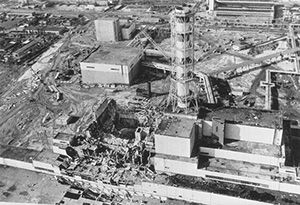
When a reactor overheats and explodes, the escaping steam will be highly radioactive. The coolant water is radioactive anyway, because it’s been flowing through the reactor vessel. The force of an explosion will also scatter debris from the reactor; some of this can be huge chunks weighing tons, but there will also be a lot of pulverized concrete, much of it radioactive, and that can be thrown high into the air by the blast. Some of it will even be small enough to attach itself to water droplets in the escaping steam, and once that happens the winds can carry it for thousands of miles.
Meanwhile, the heat generated by the meltdown will start an intense fire that’s likely to quickly engulf the whole reactor. Temperatures in a melting core can reach 9,000°F, so pretty much everything around it burns. It can take days to contain it, never mind put it out – and until it’s contained it will be belching out a plume of radioactive smoke. When the Chernobyl plant blew up following a bungled safety test in 1986, the fire in Number 4 reactor wasn’t contained for nine days. Hundreds of millions of people in the USSR and western Europe were in the path of the radioactive smoke plume; traces of radiation made it all the way around the world.
Related: What To Pack In Case of A Nuclear Attack
The Critical Weakness
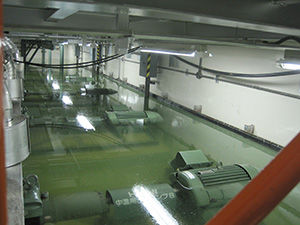
Our reactors are better designed and built – mostly – but the effects of an EMP would turn them into 99 potential Chernobyls. If the power grid is taken out, all our reactors will instantly go into shutdown mode – and if their coolant pumps stop running, they’ll almost certainly melt down. To stop that happening all nuclear power plants have their own backup generators. These power the coolant pumps for both the reactors and the spent fuel cooling ponds, which can also melt down if they aren’t cooled. It’s an effective system, but what happens if the backup generators fail too?
In fact, we already know the answer to that one: Fukushima happens. The initial earthquake that hit Fukushima put the reactors into a safe shutdown mode; then the tsunami took out the generators that were essential for the shutdown to stay safe. If an EMP takes out the generators, exactly the same will happen at every one of the USA’s 99 power stations as happened at Fukushima.
The unanswered question is what effect an EMP will have on the backup generators. In fact a lot of the generators themselves will probably be unaffected; they’re just big Diesel engines, and those can be pretty simple. Older Diesels don’t need any electronics to run, so as long as they can get started, they’ll work.
Where it gets difficult is starting them. These backup systems kick in automatically when the reactor shuts down, but that process does need electronics. Unless the reactor’s systems tell the generator to start, it won’t. In some cases the station’s operators might be able to start the generators manually and keep the pumps running, but that’s going to depend on the generators. If they have electronic control systems, instead of plain old fuel injection, they’re going to fail.
It’s likely that, even in the chaos that would follow an EMP attack, many reactors would still manage to shut down safely. However, plenty more probably won’t. The smart assumption to make is that at least half of them will have some sort of failure, and many will be as bad as Chernobyl or Fukushima.
Unfortunately, most of the USA’s nuclear reactors are on or near the east coast, and that means the prevailing winds will carry the steam and smoke inland. Large parts of the Midwest will be exposed to fallout. It won’t be anything like the fallout from a nuclear attack – a reactor accident will scatter a few tons of radioactive dust, while a nuclear ground burst will throw a few thousand tons into the atmosphere – but it could be bad enough.
Worst of all, with the media wiped out you probably won’t know what’s happening beyond the range of any radios you’ve managed to keep working. That means you have no idea if a reactor in the next state has turned itself into a radioactive bonfire. So if the power suddenly goes out and you think an EMP attack has happened, react the same way as you would if it was a nuke; prepare a fallout room as fast as you can, and stay under cover for two weeks or until you get more information.
You may also like:
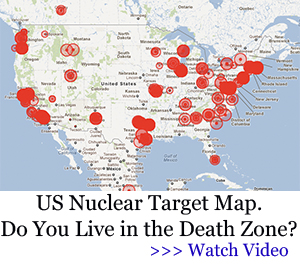 6 Things FEMA Doesn’t Want You To Know
6 Things FEMA Doesn’t Want You To Know
The 7 Actions To Take Immediately Following An EMP Strike (Video)

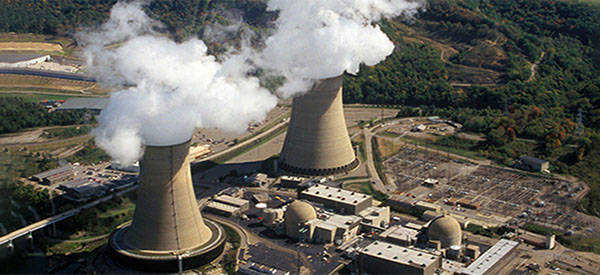













Your are correct that most nuclear power plants in the us can not safely shut down without external power. There are approximately 40 nuclear power plants in the united states with the same design as the reactors in Fucashima, Japan if a disaster were to strike one or more of these plants and the power source and backup power source was disabled the outcome would likely be the same as that experienced by Japan. An emp is only one of several situations that could result in a meltdown. The problem could be a natural disaster such as an earthquake or flood or it could be man made such as an act of war or terrorism. It makes little difference these plants need to be redisigned or shut down until they have a default shut down that is safe without external power. Much concern has been given to the threat of nuclear war but that would likely trigger melt downs in multiple nuclear power plants. The radiation from the multiple meltdowns could actually be worse and more wide spread that that from the nulear attacks.
The rule of thumb is; if you are within 20 miles of a meltdown, don’t bother running. You ARE going to die and hopefully sooner than later. Within 50 miles, you might get clear of the immediate radiation, but you will most likely have been effected and your life span has been shortened.
All power plants are built next to a water source, lake, river or ocean. In essence, the water is going to be contaminated for a looooong time.
Sorry Izzy, but this is completely inaccurate. People within TWO miles of Chernobyl survived unharmed. If you can protect yourself from fallout you’ll be fine.
“Right now there are 99 operational nuclear power stations in the USA,”
Not exactly. There are 61 power stations, but some have more than one reactor. “Reactor” is the operative word. Not all are online. Several are being retired or have been retired. Like San Onofre, Diablo Canyon 1 & 2, etc. When a reactor goes offline for re-sleeving, they are offline for approximately 1 to 1 1/2 years. Ergo, not generating anything, but more cost to the taxpayers.
Nuclear power was suppose to lower costs of power, but all it did was raise the costs to consumers. And, it made companies like SCE, PG&E, ComEd extremely wealthy…wealthier than they ever were. Oh yeah and companies like Bechtel.
“The total death toll from nuclear accidents is lower than the number of people who die in coal mine accidents every year”
While that might bear some truth, the death toll from cancer in people who worked in these places has risen dramatically.
The cost vs amount of power generated by nuclear generators has proven to be the most costly of ALL forms of electricity and, at times, the most ineffective.
You seem to be ignoring the tems of thousands of deaths other pollution causing sources of power generation are responsible for EVERY YEAR.
You seem to ignore the teens of thousands of deaths each year from pollution caused by noon nuclear sources of power.
The water used to cool down reactors is loaded with radioactive materials. My concern is the long term effects when this goes into the rivers, etc and contaminates the water supplies. Anyone remember 3 mile island?
Along with marine life.
That water DOESNT go into rivers or other bodies of water. The primary cooling in nuclear reactors is closed loop. Anything that leaves the plant provides cooling through heat exchangers.
Actually how the radiation pools work is that as the rods heat the water to boiling the steam turns the turbines and thus work as a large steam engine. So in all reality the risk of it entering the local water would only be due to a massive leak. Chernobyls reactor blew because their wasn’t enough water to submerge the rods which was a pump design flaw that they were lucky didnt do worse to the town as those cores reach temperatures so high it can melt titanium in seconds.
Chernobyl blew up because it had a positive void coefficient and the control rods had moderator at the leading and trailing edge.
What does this mean? With the design of Chernobyl, trying to emergency stop the reactor initially makes it make MORE power, not less, and when it overheats it makes even MORE power. It was all but designed to blow up. It wasn’t a failure of the cooling pumps. They never could have coped. In the second or two before the explosion the reactor was generating more power than the rest of the country…
In this type of scenerio, I don’t think it would be such a terrible idea to go gently into that good night. Who would want to survive in that world? Enjoy your Thyroid cancer. Have fun not being able to grow food thanks to radioactive soil and water.
Seriously. Do any of you have a convincing reason to keep fighting at that point?
You are exactly right Great.
Plants and bugs are generally more resistant to the effects of radiation than people. I suspect you would be able to grow food just fine. You would just need to live long enough to be able to eat it. Or…you could eat it with the third arm you just grew!
Convincing reason to keep fighting? I think that’s the reason why we are all here. Because one of our ancestors had the ‘keep fighting’ mentality when things sucked royally.
Actually you can farm again otherwise Nagasaki and heroshima wouldn’t still exist would they? Not to mention the people of Chernobyl returned to live their for quite a while till they closed the city again for raising radiation. The Chernobyl tours even take you as close as 200-300 meters away from the reactor with minimal effects even to male reproductive organs. It’s the intial meltdown that killed so many especially of the firefighters.
Actually, radioactivity from a nuclear reactor is more long-lived than that from a nuclear bomb. Reactors are designed to operate close to critical without going critical for a lengthy time, thus dragging out the radioactivity, keeping the decay controlled, and dealing with products with long half lives. Conversely, the fallout from a bomb has a short half life as the chain reaction takes a small fraction of a second and everything from that point on is spread and decay.
No, that’s not how it works. The reaction processes in a reactor and a weapon are different, but that doesn’t affect the radioactivity of the fuel. In fact the massive gamma pulse from a nuclear weapon is capable of creating all sorts of weird isotopes that are much worse than anything found in a reactor.
Are you sure about your wind directions carrying fallout. Ilive near St. Louis and almost Alli our weather comes from SW THRU NW. Weather from the East is rare.
I agree. It is a good thing that most Eastern nuke plants are along the coast as the prevailing winds are from the West.
It would seem that we’re going to need another article to address the whole safe/unsafe question generally. It would be nice to address specific locations, too. I remember reading not long ago that there were several plants that had major issues with safety protocols, failing equipment, etc. These were all supposed to be fixed, but there never seemed to be any follow up from the press. Also does anyone remember what caused the Chernobyl plant to melt down?
Chernobyl didn’t meltdown persay. It exploded. What was left of the reactor melted afterwards. What happened at Chernobyl is largely irrelevant, Chernobyl was all but designed to fail.
Biggest threat of an EMP was coming from North Korea but it seems they have calmed down recently because of heavy sanctions. They are either starving more than a year ago or just don’t have the money to continue with nuclear program. And has anyone heard any thing about them recently? So I guess the next threat would be russia but I don’t see them doing this. Then maybe China but we owe them too much money. Seems to me they are the only three capable of doing this. I don’t put Iran in there they don’t have the ability to get a missle over here and not much of a navy either. So who else are we threatened by from such an attack?
I believe in regard to North Korea that no news is good news. Any shred of reason to believe that NK nukes are a major issue would be plastered all over the main stream media. They are quiet because there is nothing to blame on POTUS.
Only a fool (like Trump) would think nk is ‘no longer a threat’. They have demonstrated the ability to get into space as well as they have enough snm for 50 or more nukes. This means they have a defacto capacity to cause an emp over conus.
China uses NK as a mouth piece. Last time they got too out of hand in the dark comedy section, china frowned and Kim the Ill shrank back into himself. And then died. niio
Thing about the safety measures is we helped Japan with theirs and when the quake took out the reactor the fail safes also proved they couldn’t get the job done to prevent the now leaking radioactive waste in to the Pacific ocean. Let’s be very serious these fail safes have never been tested only safe measure to stop radiation from seeping out is sealing off the nuclear rod pools with giant lead plates but those will melt if the radioactive rods are exposed above water level. We found a powerful tool that is extremely deadly. Theirs over a 160 on the east side of the USA mostly along the fault line alone. In an emp situation it’s get as far underground as possible including underground garages made of concrete and rebar to absorb 85-90% of the radiation that can go 20ft below the surface. The initial meltdown nay not kill you but staying around longer than a few minutes in a yellow zone sure as hell will.
Twenty feet below the surface is unnecessary. Three feet is enough.
An underground garage is ideal. But even an above ground multi-floor garage is good. Second floor is ideal; fallout on the surrounding ground has to go through the concrete floor you are standing on, at an angle which makes it many feet thick. Fallout on the top of the parking garage has to go through all the levels between the top and yours.
I doubt a Fukushima-type failure will occur in the US. That was a highly-improbable one-two punch to begin with. The reactor shut down safely. The backups were taken out by a tsunami. In an EMP event, I think the reactors would fail safe, and backup diesel generators could be activated manually by the highly-trained operators.
As far a nuclear power being expensive, one of the reasons is because each plant is unique, built from scratch. They would be much less expensive if we had cookie-cutter plants like France, which gets 70% of its power from nukes.
Highly trained operators with a strong motivation to start those generators, namely survival.
Conversely, modern electronics in the generators could be trouble from an EMP perspective, as the author pointed out. The location of the generators relative to ground zero and the containment building, the amount of shielding provided by the metal boxes with the generator, etc, are real factors and are unknowable. Do it does seem conceivable that some could fail.
A tidal wave caused by a meterite or mountain/volcano collapse on the Canary Islands could take out the entire East Coast including the nuclear plants
A lot of damage, but except near rivers and bays, a few miles is the maximum.
Also, much of the East Coast has barrier islands. Small craft can travel the East coast on the “Intracoastal Waterway” behind those islands and avoid the ocean. The mainland would receive little impact where it is behind these islands. I am familiar with Florida where they protect most of the East coast (where the main road is always called “A1A”) and in North Carolina they are called “the outer banks”.
Hey Mikey, I sure hope you’re right about the unlikely Fukushima failure, but I can’t ignore this one little thing; Murphy is alive and well…
An EMP, in my opinion is absolutely THE WORST thing that could happen to this country, or any industrialized nation for that matter; the nuclear plant failures would be the nails that will seal all our coffins.
I’m all for progress, clean energy, and the life they provide for us, but nuclear plants? …Bad idea. The juice we’re getting from them, in my opinion, just ain’t worth the squeeze.
You had me right up until the point that you gave false information that was designed to terrify the people in the Midwest. In case you haven’t gone through proper class the prevailing winds come out of the west in most cases. Although you can get some flow out of the east that is normally caused by very powerful storms . Those are not prevailing winds! I think your concern is well noted and I would hope the industry is taking steps to protect their equipment from an EMP pulse.
As a sidenote there is a nuclear reactor located just to the west of Chicago Illinois. I believe it’s called Byron nuclear power station. It is located mid Illinois between Dixon Illinois and Rockford Illinois. I would think that particular react if not properly shut down could cause some major problems for the Midwest. Especially the upper Midwest. Just thought I would share my sentiment! The reality does not need to be presented using false information it’s already bad enough!
On or near Lake Michigan you have,
in Illinois
Braidwood Station, Unit 1 and Unit 2,
LaSalle County Station, Unit 1 and Unit 2
Byron Station, Unit 1
in Wisconsin
Point Beach Nuclear Plant, Unit 1 and Unit 2
in Michigan
Donald C. Cook Nuclear Plant, Unit 1 and Unit 2
Palisades Nuclear Plant
There are also plants on Lake Huron, Lake Erie and Lake Ontario
Lake Superior will be the only NON nuke polluted Great Lake and it is separated by the Locks at Sault Ste. Marie from the contaminated waters
And once again I need to say, In the event of an EMP anything plugged into the grid will be fried by the pulse and that will include every computer running the Nuclear plants. There will be NO shutdown possible without the software to run it. They will melt down… run for your lives.
One thing you are right about, the back up diesel generators are big. They use a lot of fuel. Where are they going to get their resupply in the confusion of an EMP? On station is about 48 hours worth. It takes a long time to dissipate that much residual heat.
Thorium Reactor
In the event of an EMP there will be NO working computers to shut down the process. Manual shutdown fixes are not in place at this time There will be a meltdown without a single doubt. The first explosion at Fukushima happened in about 18 hours after the loss of power. You have roughly that amount of time to get the heck out of the area. You better start running because you won’t have a working car to drive.
There is NO evidence to back up you claims, furthermore there is lots of evidence that shows your claim is baloney. Actual emp testing at the highest credible e fields shows that a surprising amount of modern electronics survive undamaged.
So many misconceptions put out here. This is mostly just fear mongering. While there is some level of risk with everything the kind of things put out here would not happen. Sorry to those who are selling the end of the world.
Unless you can show, that without any reliable source of electricity a nuclear plant can be shut down by a handful of people with nothing more than hand tools and some instructions understandable by a backyard mechanic, you are not going to calm anyone’s REASONABLE fear of a meltdown.
Shutting down a reactor after loss of power is not the issue. Removing the decay heat untill the reactor is cool enough to no longer need active cooling is the issue.
Semantics. What the general public would consider as “SHUT DOWN” would be the end of all the processes necessary to make it safe to walk away from and not have any further threat to the population or the environment. Most people understand that just throwing a switch does not make a nuclear reactor safe to walk away from.
You are the one wanting a reactor to be shut down with hand tools by Leroy from the bait shop and you are worried about semantics?
My point was, after events such as 3 Mile Island, Chernobyl, and Fukushima most rational people understand that there is a good reason to be fearful of an impending nuclear disaster due to an unattended reactor site. Be that because of a loss of electrical power of natural or unnatural causes, Lack of trained personnel due to a terrorist attack or a pandemic, or a cyber attack, the list goes on… Whatever the reason, if the processes that could lead to an eventual meltdown cannot be mitigated by laypersons and that can be shown to be the case, you will not quell the fears of a justifiably frightened population
The accidents you mention have NOTHING to do with some unattended nuclear power plant. There is no credible concern where all skilled nuclear engineers and technicians will just vanished. You might as well hide under your bed in fear of the zombie apocalypse.
The most optimistic requirement that I’ve seen is that the feds mandate at least a 7 day supply of diesel, with some reactors having a 30 day supply. Of course, this is not enough, but may allow for an evacuation. I would hope that, given the EMP threat, diesel generators would have alternate, non electronic, means to start and would be protected in faraday containment. In the case of the Cascadia Subduction Zone, a west coast earthquake and tsunami would cause trouble in reactors in OR and CA. In that case, perhaps diesel could be replenished in time. In an EMP, one that would overcome everything electronic, including controlling cooling pumps, trucking, communications and the internet, it would probably be best to try to evacuate. The jig would be up!